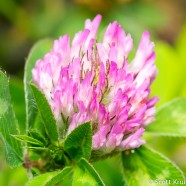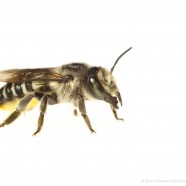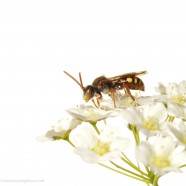Ken Parker – Eco-logic: Using Native Plants in the Landscape
Tonight! Monday February 22 at 6pm at RTPI Ken Parker will be presenting Eco-logic: Using Native Plants in the Landscape. Ken will be discussing the importance of using native plants in landscaping as opposed to non-natives, as well as the Seneca Nation Native Plant Policy that went into effect last year. Ken Parker is a passionate indigenous horticulturalist with strong ties to Mother Earth and Native cultures. A New York State Certified Nursery Landscape Professional (CNLP), Ken has spent decades devoted to growing, installing, teaching and promoting indigenous plants of North America to...
Read MoreInsects to Birds
It is starting to get darker earlier each day. The sunflowers are growing in height. The insects are peaking, and our bees will be slowing down shortly. For now the flowers are feeding the bugs, but soon enough they will be transitioning to feeding all of the birds pouring down to the south, with the later arriving seed eaters ready to feast on sunflowers right out of the garden. Is it going to be a large irruptive season for the winter finches? While it is too soon to tell for certain, some Red-breasted Nuthatches and Purple Finches seen out of place to the south in a few places late this...
Read MoreClover Up Close
In today’s episode of “Clover Up Close” we see the all too typically busy bee hard at work. Hey, it looks like you missed some of that pollen, come back! And please bring all of your friends…remember, if we build it, they will come.
Read MoreLeafcutter Bee
This is a female Leafcutter Bee (Megachile sp.), and as you can see from her large mandibles she cuts leaves of vegetation to build nests. They make their nests in the ground and take the small clippings down the hole to line the interior. Photographed by RTPI Affiliate Sean Graesser for the Meet Your Neighbours global biodiversity project in Connecticut for the Roger Tory Peterson Institute of Natural History.
Read MoreCuckoo Bee
This Cuckoo Bee (Nomada sp, Ruficornis Group) is a very interesting subject. As you can see they have a very showy outward appearance, but come from a very basic lineage, thus why they have such a wasp-like appearance. While it is difficult to identify to species these Cuckoo Bees are fascinating to observe and around this time of year. They don’t collect pollen, but rather parasitize other bees, by laying their eggs in Mining Bee nests. Photographed by RTPI Affiliate Sean Graesser for the Meet Your Neighbours global biodiversity project in Connecticut for the Roger Tory Peterson Institute...
Read More








